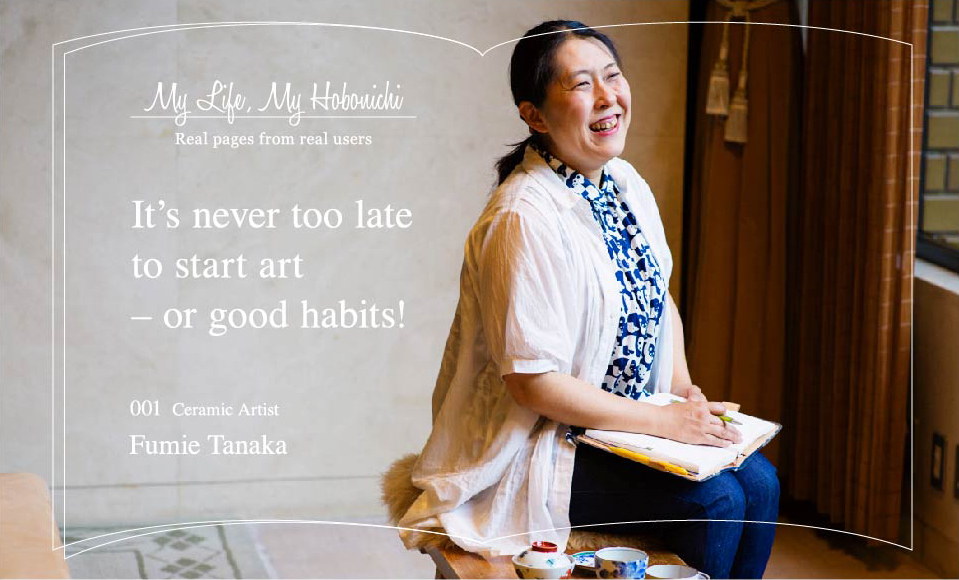
The town of Arita, located in southwestern Japan, is currently celebrating 400 years of making porcelain. It’s a place steeped in tradition, yet newcomer Fumie Tanaka has built a successful career here based on her own designs, and in a surprisingly short time. For her, the Hobonichi Techo is one of the many professional tools she relies on as a working artist.
- Hobonichi:
- It’s an honor to count a talented artist like yourself among our users. I understand that using a planner is something new for you?
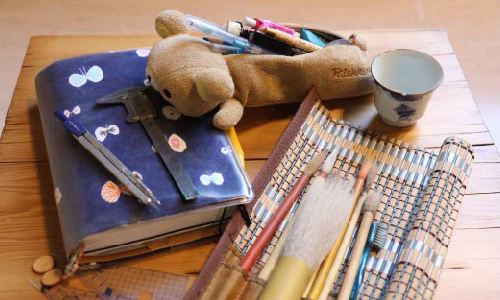
- Fumie:
- Yes, quite new. I only started using a planner three years ago, when I decided to go independent and try to make it on my own as an artist.
- Hobonichi:
- Is there something significant about that timing?
- Fumie:
- Leaving my job and salary, knowing I’d have no one to fall back on, was pretty scary. I knew I’d have to do things right if I was going to make a success of it. So I studied the successful people around me and noticed that they all used planners.
- Hobonichi:
- Then you decided to get a planner, too. What made you choose the Hobonichi Techo?
- Fumie:
- To be honest, I fell for this minä perhonen cover. I love the butterflies and the bright colors. I’ve been using this cover for three years and still love it as much as the first day I saw it.
- Hobonichi:
- How do you use your planner?
- Fumie:
- For me, it’s very much a professional tool. I use a lot of tools in my work—pencils and brushes, of course, but also turntables and calipers and plastic triangles, which are critical for correctly positioning a design on a piece. My techo is another tool that helps me get my work done.
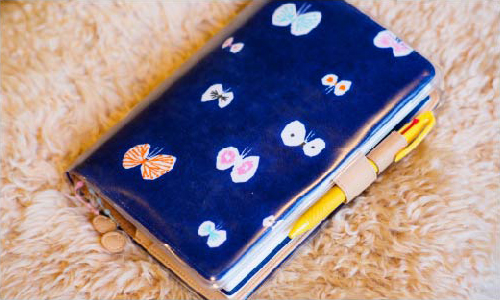
- Hobonichi:
- What about personal memos?
- Fumie:
- I don’t write anything personal in my techo, and if I’m going out for something that has nothing to do with work, I leave it at home. But otherwise, I always have it with me.
- Hobonichi:
- Do you write in your planner every day?
- Fumie:
- I wish I could say I do, but when I get absorbed in my work, I can go weeks without writing a thing. So when you flip through my planner and see a lot of empty pages, you know that’s when I was really focused on my work.
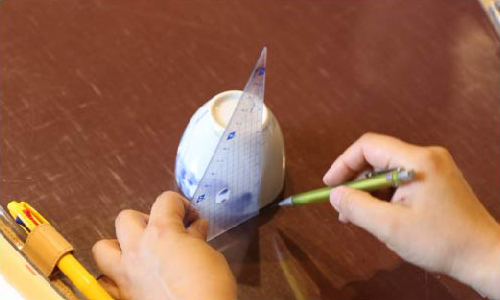
- Hobonichi:
- And then there are whole sections where every page is filled.
- Fumie:
- When I hit a rough spot in my work, I find it helpful to pick up the planner. Just writing something in my planner makes me feel like a hard-working, organized person again. It’s a way to jump-start my motivation.
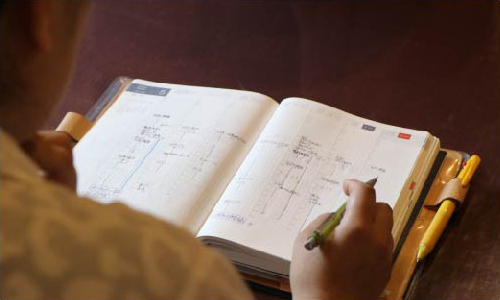
- Hobonichi:
- What kind of things do you write in your planner?
- Fumie:
- Whatever comes to mind. Scheduling information, of course, but also notes to myself about what designs I’d like to use in an upcoming exhibition, or what sort of porcelain forms I need to order for a new series I’m planning.
- Hobonichi:
- I see quite a number of sketches, too. Is this cutie a chicken?
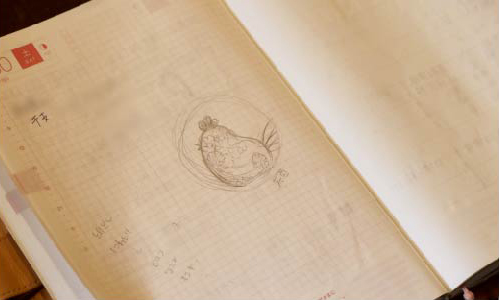
- Fumie:
- I often start on new designs by sketching them out in my techo. Next year is the Year of the Rooster, so I’m working out a rooster design for my ongoing Zodiac series. This line here for the belly is very important: too chubby, and the bird will look childish; too skinny, and it won’t be cute.
- Hobonichi:
- Did you always want to be an artist? Was this your life plan?
- Fumie:
- Not at all. When I finished school, I took a regular job in a big company in Tokyo, with no thought whatsoever that I would ever be doing what I am now.
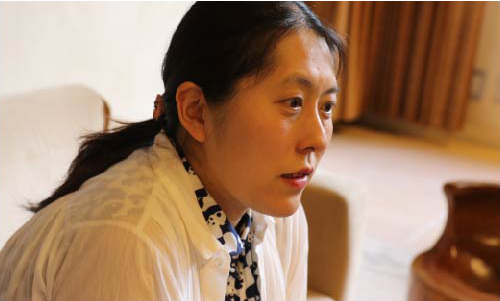
- Hobonichi:
- So how did all this happen? How did you end up in this dream job?
- Fumie:
- My mother is from Arita, and when my father died, she wanted to return to her hometown. I quit my job to help her move and settle in, thinking I’d be back in Tokyo in a year or two. Since I was living in the birthplace of Japanese porcelain, I figured I ought to take a few pottery classes. But at that point I thought of ceramics as a hobby. I never thought it would become my vocation.
- Hobonichi:
- And yet here you are now, with your work prominently featured on the cover of an Arita tourism brochure, and a solo exhibition at a prominent porcelain museum in Tokyo. [Editor’s note: Fumie Tanaka’s third solo exhibition at the Toguri Museum of Art ran from April 5-June 19, 2016.]
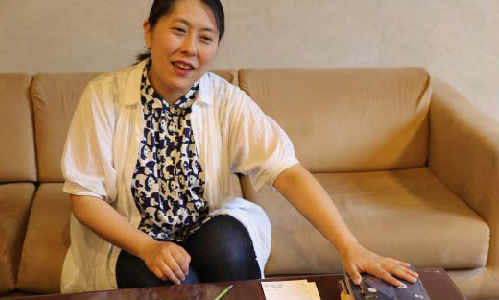
- Fumie:
- I’m as surprised as anyone that I’ve actually had success as an independent artist, especially considering that I started fairly late. I’ve been really lucky to have a number of people supporting me, and good opportunities that came along just at the right time.
- Hobonichi:
- You have very much your own style, yet you seem to draw on traditional themes. Can you tell us about that?
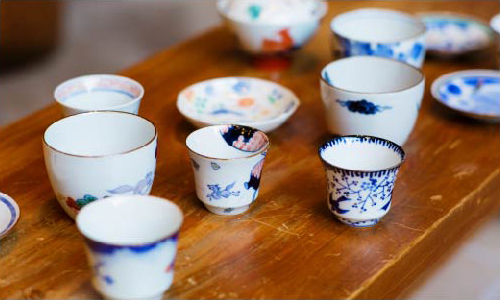
- Fumie:
- The motifs and patterns you see on antique Japanese porcelain almost always carry special meanings, and many of these designs are very old, having originally come to Japan from China, or even from Persia and Egypt via the Silk Road. The meanings behind these motifs make them more interesting to me.
- Hobonichi:
- Can you give us an example?
- Fumie:
- Well, spider webs, for an example. In a museum, I noticed a very old piece of Japanese porcelain with a spider-web design, and thought that was rather odd. But when I researched it, I learned that spider webs were a lucky symbol. Because things catch on them, they were seen as a way to “catch” good fortune. For a time during the Edo period [1603-1868], kimonos with spider-web designs were really popular among geisha and courtesans, in the hope that they would help them catch a good patron, or at least lots of customers.
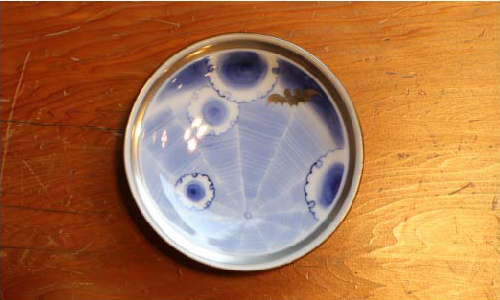
- Hobonichi:
- So you decided to use the same design in your own works?
- Fumie:
- Yes, but I changed it somewhat. The dish I saw in the museum had the spider web centered in the middle of the dish, but in my own designs, I like to place the web off center, or combine it with flowers. The irony is that I hate real spiders. I run screaming from the room if I see one.
- Hobonichi:
- You also seem to use a lot of bats in your designs.
- Fumie:
- Bats are another very auspicious symbol, a belief that originated in China and spread to Japan. The word “bat” in Chinese is a homonym for “blessings.” Many traditional patterns have that kind of word play tied into their meaning.
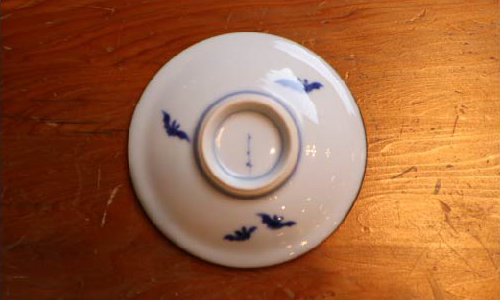
- Hobonichi:
- So what’s your plan for the future?
- Fumie:
- I’m not the sort of person who plans years ahead. My dreams are fairly modest – to continue as I am now, developing my own designs and making dishes that people can hold in their hands and enjoy in their daily lives. It would be nice to have a little help, but one thing I’m clear about: I want to do the design and painting myself. Otherwise I’d feel like a company instead of an artist.
Special thanks to the Toguri Museum of
Art, Tokyo.
Interview: Alice Gordenker
Photo: Takashi Matsumura and Hobo Nikkan Itoi Shimbun

